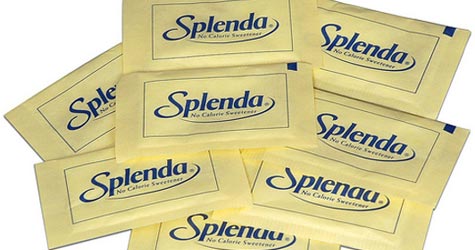by Randall Wilkens
With obesity being so widespread throughout the United States, most people are looking for any means by which to lower their body weight. Those who believe in the tried and true will exercise regularly and make dietary discretions to safely keep their weight under control. Others, who want to continue to experience the comforts that they have grown used to, will use other means to do so. Some will go to great lengths, such as having surgical procedures performed while others sometimes take a very detrimental, and potentially deadly, route into the world of anorexia and/or bulimia. Then there are those who will substitute one harmful substance, such as sugar, for another. Often times, though, the replacement can be just as horrible, if not more so, for the human body than what it is taking the place of.
One of those substances is an artificial sweetener which has recently come under scrutiny in a “first of its kind” study published in the European Journal of Nutrition. Sucralose, which you may know better as Splenda, was shown to have an adverse effect on thyroid axis activity in male rats. Essentially, sucralose has the qualities of an endocrine disruptor in mammals. The end result is that thyroid hormone is suppressed, there is an increase in appetite in the test subject and consequently weight gain is also noted. (RELATED: Stay up to date on news about chemical sweeteners at Sweeteners.news)
People who are replacing sugar with Splenda to control their weight may actually be doing more harm to themselves than if they had just used regular sugar, and the problems don’t end solely with weight issues. In fact, including neurotoxicity, there are over 15 signals of harm linked to this chemical sweetener.
This information is in addition to the fact that when heated, sucralose created carcinogenic dioxins. Researchers have used this information alone to classify sucralose alongside toxic pesticides such as DDT. This is even further, and frighteningly, compounded by mass media commercials (and even the Splenda Baking and Cooking website) which advertise Splenda as a safe sugar substitute for tasks such as baking.
Those same commercials use “safe” imagery of a woman baking with Splenda while holding her child. Even if that child doesn’t consume any of the baked goods his mother is creating, another study has already shown that sucralose contaminates 65 percent of the breast milk of those who ingest it. While parents may think they are making a healthier decision, at least for themselves, in all actuality they are exposing their children to the toxic effects of this artificial sweetener.
It does appear that there may be some light on the horizon when dealing with sucralose. In 2013, the Center for the Public Interest in Science removed sucraloses classification as being “safe” and reclassified it under the “caution” moniker. Another study also showed that Splenda had an effect on diabetes-associated changes, such as an increase in both blood and insulin levels.
The question eventually must arise as to when these tests will be performed on human participants instead of other mammals. Aside from the fact that the cost would be highly prohibitive, the explanation that is of more importance is the ethics behind performing chemical safety testing on living human beings. This gives companies like Splenda who use sucralose a tremendous amount of leeway in saying that while the harmful effects are visible in lab rats under the guidelines of a controlled environment, it is possible that the same effects would not be commonplace in human beings. Thus, the outward declarations of products that use sucralose in any capacity to be promoting a healthier life won’t technically be construed as false advertising until further testing can be performed. (Natural News).



